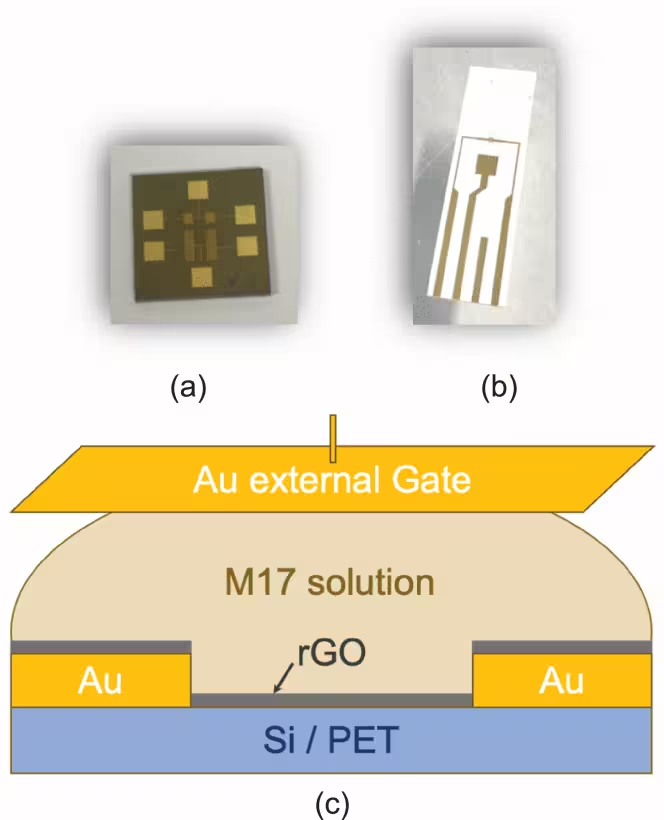Monitoring of Lactococcus Lactis Growth Based on Reduced-Graphene Oxide TFT for Dairy Industry Applications
Reduced-graphene oxide thin-film transistors (rGO-TFTs) are promising technology for developing miniaturized biosensors. This study investigates the use of rGO-TFTs for monitoring the proliferation of the Lactococcus lactis (L. lactis) bacteria, a crucial fermentation agent in dairy production. While traditional methods for assessing bacterial proliferation in dairy products often involve complex and time-consuming laboratory processes, the rGO-TFT-based biosensors offer a cost-effective and simple alternative, allowing real-time in-situ monitoring of bacteria presence and growth, particularly useful in dairy industry applications.
L. lactis bacteria are essential for milk fermentation, and it's crucial to closely monitor their presence and proliferation in milk to ensure safe and high-quality products. rGO-TFTs can serve as sensitive and stable devices due to the direct interaction between the graphene-based semiconductor and the biological elements, allowing the detection of subtle changes in electrical signals as the bacteria population changes.
The researchers fabricated two types of rGO-TFT devices, one based on a silicon substrate (Si-TFT) and the other on a flexible polyethylene terephthalate substrate (PET-TFT) tested with M17 broth. Both devices were fabricated with interdigitated gold electrodes for measurements in bacterial solution, coupled with a submerged gold electrode acting as the transistor’s gate. The growth of Lactococcus lactis was detected through changes in electrical properties. The changes in electrical properties, specifically focusing on the threshold potential of each sensor, which shifts in case of bacteria proliferation in the solution, were closely monitored. This variation acts as the primary indicator of bacterial concentration.
Both Si-TFT and PET-TFT sensors demonstrated stability over time, with the PET-TFT consistently showing to be more suitable for detecting bacterial presence, as it reports a clear shift in threshold potential even for low concentrations of L. lactis. The PET-TFT performances enabled it to monitor bacterial growth in real time over several hours. The bacterial proliferation was observed by tracking changes in threshold potential, validating the approach with a well-established optical method. Results confirmed that PET-TFT was highly effective in detecting increases in bacterial concentration, positioning the device as a valuable tool for real-time monitoring of bacterial presence and activity in dairy environments.
Notably, the developed biosensor is potentially scalable and suitable for direct implementation in production lines for in-site bacterial monitoring, significantly reducing the need for traditional lab testing and offering a quicker and more accessible approach to managing bacterial levels and improving dairy quality control. Future works will aim to expand the applications of the rGO-TFTs sensor by adapting the device for detecting bacteriophages (viruses that infect bacteria), further enhancing its utility for food safety and quality assurance in the dairy industry.
In conclusion, this study presented the merit of rGO-TFT biosensors for real-time and rapid bacterial monitoring in dairy production. The PET-TFT, in particular, constitutes a high-performing and cost-effective option that could simplify bacterial growth monitoring for milk fermentation, enhancing quality control, efficiency, and productivity in the dairy sector by enabling precise bacterial growth monitoring.




